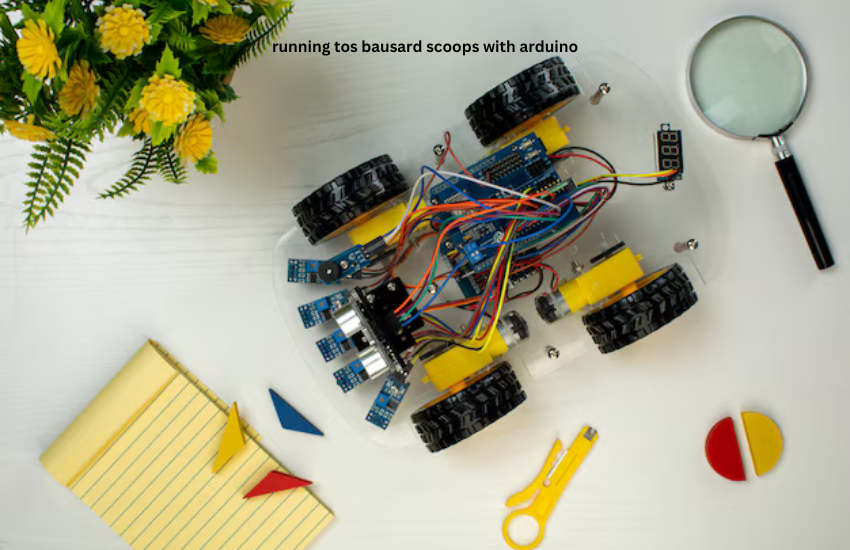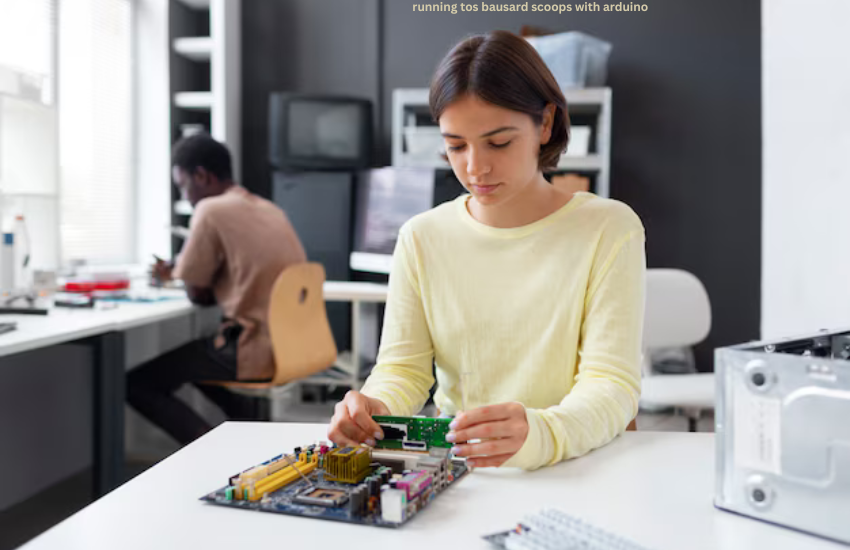Understanding Arduino
Arduino is an open-source electronics platform based on easy-to-use hardware and software. It is widely popular among hobbyists, engineers, and professionals due to its simplicity and versatility. At its core, Arduino boards can read inputs—like a light sensor, a finger on a button, or a Twitter message—and turn them into outputs, such as activating a motor or turning on an LED.
Why Use Arduino with TOS Bausard Scoops?
Using Arduino with running tos bausard scoops with arduino allows for precise control, automation, and customization of operations. Arduino’s flexibility enables you to tailor the functionality of the scoops to specific tasks, integrate sensors, and implement real-time feedback loops. This makes it an ideal choice for optimizing processes in environments where efficiency and accuracy are critical.
Required Components
To run TOS Bausard Scoops with Arduino, you’ll need the following components:
- Hardware:
- Arduino Board (e.g., Arduino Uno, Mega)
- TOS Bausard Scoops
- Power Supply
- Connection Wires and Connectors
- Sensors (optional for advanced control)
- Software:
- Arduino IDE (Integrated Development Environment)
- Necessary Libraries (for sensor integration and motor control)

Setting Up Arduino for TOS Bausard Scoops
Start by installing the Arduino IDE, which is available for Windows, macOS, and Linux. Once installed, connect your Arduino board to your computer using a USB cable. Open the Arduino IDE and select your board type and port under the “Tools” menu. This will prepare your Arduino board for programming.
Basic Connections and Wiring
Connecting the TOS Bausard Scoops to Arduino requires careful attention to wiring. Below is a simplified wiring guide:
- Power Supply: Connect the VCC and GND pins of the scoop to the 5V and GND pins on the Arduino.
- Control Pins: Use digital I/O pins on the Arduino to send control signals to the scoop’s operational inputs.
- Sensors: Optional sensors can be connected to analog or digital pins for enhanced control.
A detailed wiring diagram will be essential for accurate setup, ensuring that all connections are secure and correctly oriented.
Testing and Debugging the Setup
Once you’ve completed the wiring and coding, it’s time to test your setup. Start by uploading the code to your Arduino board through the Arduino IDE. Monitor the scoop’s behavior to ensure it responds correctly. Common issues may include loose connections, incorrect pin configurations, or software bugs. Use the Serial Monitor in Arduino IDE for debugging and troubleshooting.
Advanced Control Techniques
For more sophisticated operations, consider implementing feedback loops with sensors like load cells, proximity sensors, or infrared sensors. These can provide real-time data that allows the Arduino to adjust scoop operations dynamically. Advanced coding techniques, such as PID (Proportional-Integral-Derivative) control, can further refine performance, ensuring that the scoops operate with optimal efficiency.
Enhancing Performance
To enhance performance, focus on optimizing your Arduino code for speed and reliability. This includes:
- Minimizing delays where possible
- Using interrupts for responsive control
- Organizing code into functions for modularity and readability
- Regularly updating and testing your software to adapt to any changes in requirements
Integrating with Other Systems
Arduino’s versatility allows it to connect with various other systems, including PLCs (Programmable Logic Controllers), other microcontrollers, or wireless communication modules like Bluetooth or Wi-Fi. This can be particularly useful for remote monitoring, data logging, or integrating the scoop setup into a broader automation system.
Real-World Applications
TOS Bausard Scoops controlled by Arduino can be found in numerous real-world applications, such as:
- Automated Packaging Lines: For precise material dispensing
- Sorting Systems: Where materials need to be separated by weight or type
- Agricultural Equipment: For distributing seeds or fertilizers
Each of these applications benefits from Arduino’s ability to offer customizable and programmable control over the scoops.
Troubleshooting Common Problems
When working with Arduino and TOS Bausard Scoops, you might encounter issues such as:
- Scoop Not Responding: Check power connections and signal wiring.
- Erratic Behavior: Ensure that no external noise or interference is affecting the control signals.
- Code Errors: Use the Serial Monitor to output debugging information and trace code execution.
Having a systematic approach to troubleshooting will help quickly identify and resolve these issues.

Maintenance and Upgrades
Regular maintenance is crucial for keeping the setup running smoothly. This includes:
- Checking connections regularly for any signs of wear or loosening
- Updating Arduino firmware and libraries
- Cleaning components to prevent dust and debris from affecting performance
Additionally, consider upgrading components such as sensors or the Arduino board itself for enhanced functionality or increased processing power.
Conclusion and Next Steps
Integrating TOS Bausard Scoops with Arduino offers a powerful solution for automating material handling tasks. By following the setup and programming guidelines provided, you can achieve precise control and improve operational efficiency. Next steps include exploring advanced coding techniques, adding more sensors for feedback, or expanding the setup for more complex automation tasks.
Frequently Asked Questions (FAQs)
- Can Arduino handle multiple TOS Bausard Scoops simultaneously?
Yes, Arduino can control multiple scoops by using different digital I/O pins or multiplexers to manage more outputs. - What type of power supply is recommended for TOS Bausard Scoops?
It depends on the scoop specifications, but typically a 12V or 24V DC power supply is used, ensuring it matches the scoop’s voltage requirements. - How can I integrate sensors with the scoops for better control?
Sensors like load cells or proximity sensors can be connected to Arduino’s analog or digital pins, and their readings can be used in the code to adjust the scoop’s behavior dynamically. - What are some common programming mistakes to avoid?
Common mistakes include incorrect pin configurations, not debouncing input signals, and using delays excessively which can cause sluggish responses. - Is it possible to control the scoops wirelessly?
Yes, by adding wireless modules like Bluetooth, Wi-Fi, or RF modules, Arduino can be controlled remotely, which is useful for applications where wired connections are impractical. - How do I know if my Arduino board is compatible with the scoops?
Most Arduino boards are compatible as long as they provide the required number of I/O pins and can handle the voltage and current requirements of the scoops.


